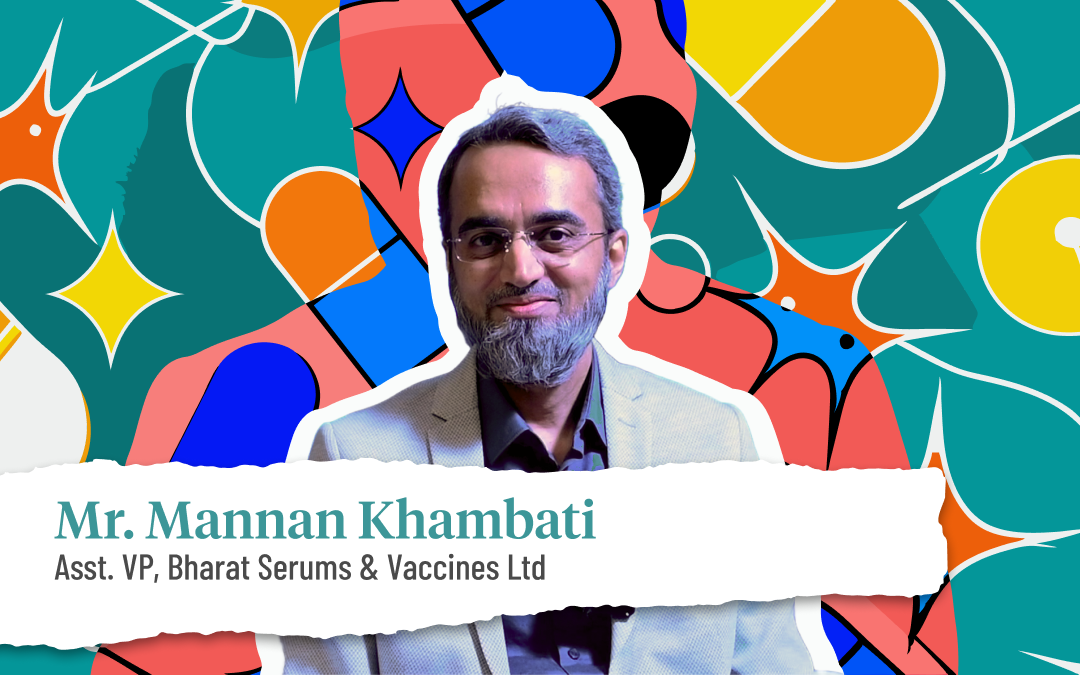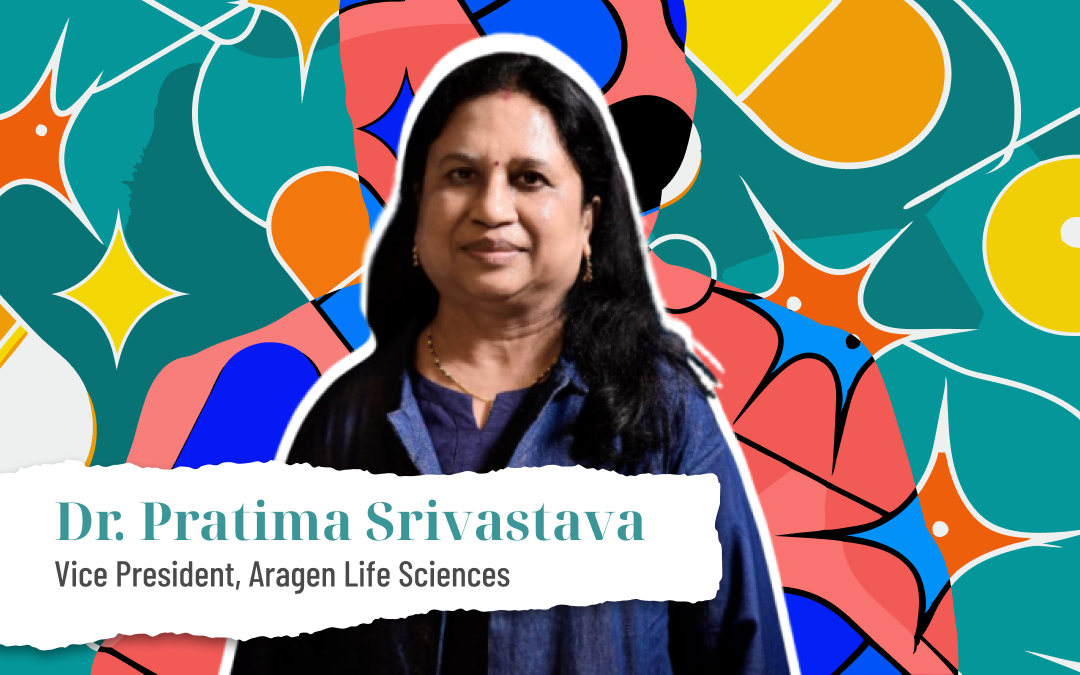QnA
Interview | October 14, 2024
Dr. Bajarang Kumbhar is a distinguished pharmaceutical scientist and leader whose work bridges drug development, regulatory strategy, and quality systems. With deep expertise in formulation, process optimization, and compliance, he drives multidisciplinary projects from preclinical to commercialization phases. Known for his collaborative approach and ability to align scientific rigor with business goals, Dr. Kumbhar plays a vital role in shaping innovation and reliability in his organization and the broader pharma ecosystem.
Dr. Bajarang Kumbhar, an Assistant Professor at SVKM's NMIMS University, is a dedicated educator and researcher specializing in pharmaceutical chemistry. With extensive research experience, he focuses on advancing the understanding of drug design, synthesis, and analytical techniques. Dr. Kumbhar is passionate about mentoring students and guiding them in innovative research projects. His contributions to academic publications and conferences reflect his commitment to fostering scientific excellence and driving innovation in pharmaceutical education and research.
Pharma Now: Welcome, Dr. Bajarang, to Pharma Now. I believe we're discussing your journey today. For our audience, could you explain why you chose biochemistry and pharmaceuticals as your area of specialization, especially as a professor at NMIMS?
Dr. Bajarang: Thank you, Pharma Now, for giving me this opportunity. I'm happy to share how I started my career and how I ended up specializing in biochemistry and computational biology, areas that are very close to Pharma Now’s focus. I began my academic journey in chemistry as an undergraduate, as I got admission in the field of chemistry. However, I soon realized that biochemistry, which is closely related to chemistry, piqued my interest.
Initially, I felt uncertain during my first semester, doubting whether I could earn an MSc in Biochemistry. But over time, I developed a fascination for DNA and its interactions, and how it ultimately influences protein synthesis, which is essential for many biochemical reactions. Proteins and DNA are key players in this process, and I became motivated to explore this area further.
This interest led me to pursue a PhD in computational chemistry, where I applied quantum mechanics to understand the conformational states of biomolecules. For example, I worked on tRNA and its interactions with RNA molecules. I realized that my background in chemistry was crucial, and computational chemistry was the perfect way to merge my interests in both fields.
Quantum mechanics allows us to understand atom-level or electron-level interactions, which play a significant role in molecular recognition. For example, in my PhD, I used these techniques to explore how tRNA interacts with other biomolecules, studying their structural changes using molecular dynamics simulations. This technique, which has been recognized with a Nobel Prize, simulates environments and helps us understand time-dependent behaviors of molecules in various conditions like pH and temperature.
Pharma Now: Amazing! Your journey sounds quite breathtaking. You mentioned computational chemistry, and I’d love to hear more about it.
Dr. Bajarang: Yes, computational chemistry became central to my post-doctoral work. After completing my PhD, I joined IIT Bombay in 2014 as a computational biochemist in Professor Ambrish Kunwar’s lab. One of my primary projects involved studying the resistance patterns of well-known anti-cancer drugs like Taxol, Vinblastine, and Combrestatin. Despite their efficacy, these drugs often face resistance, so my goal was to investigate the reasons behind this resistance using computational chemistry techniques.
We modeled different tubulin isotypes, which are components of microtubules, and studied how they interact with these drugs using molecular docking and dynamic simulations. This study revealed differential affinities between the drugs and various tubulin isotypes, which was a groundbreaking discovery in the field.
Currently, we are working on identifying potential drug molecules from online drug libraries, such as Zinc and DrugBank, using computational tools. By studying the properties of these drugs, we can predict their effectiveness and toxicity profiles, which is essential for drug discovery.
Moreover, we apply machine learning techniques, specifically supervised learning, to filter large drug libraries based on their similarity to known effective drugs. This approach has helped us identify promising candidates for further study.
Pharma Now: Computational chemistry seems to be playing a crucial role in the industry. What do you think the future holds for this field?
Dr. Bajarang: That's a great question. Computational chemistry is already revolutionizing the way drugs are designed, as it allows researchers to predict the properties of molecules before they are synthesized. This approach not only saves money but also accelerates the drug discovery process. For example, by studying the electronic properties of molecules, we can predict their ability to donate or accept electrons, which is critical in drug-receptor interactions.
Furthermore, computational chemistry is increasingly being used to study pharmacokinetics and pharmacodynamics, helping researchers understand how drugs are absorbed, distributed, metabolized, and excreted by the body.
In the future, computational tools will become even more integral to the drug discovery process. We're already seeing promising results with computational methods being applied to challenges like the SARS-CoV-2 pandemic. We recently identified potential anti-SARS-CoV-2 molecules from existing drug libraries using computational simulations.
Pharma Now: I’d love to hear more about the applications of computational chemistry in the industry. What are the key trends?
Dr. Bajarang: Computational chemistry is indeed a powerful tool for the pharmaceutical industry, particularly in drug development. Companies are increasingly using it to save costs and time by predicting the properties of molecules before experimental work begins. For example, by converting chemical compounds from one-dimensional to three-dimensional models, researchers can simulate how these molecules might interact with drug targets. This approach helps identify promising drug candidates more efficiently.
In addition, computational chemistry plays a significant role in biosimilar drug development. By analyzing the structure and properties of biologic drugs, it helps identify the most appropriate biosimilars, reducing development costs and time.
Pharma Now: It’s fascinating to see how this technology is shaping the future of pharma. Dr.
Bajarang, as someone who came from a small town in Maharashtra, what inspires you, and what advice would you give to students entering this field?
Dr. Bajarang: You’ve touched my heart with this question. I come from Atpadi in Sangli district, where access to education was limited, and I faced many challenges in my early years. In fact, I failed twice in 10th grade. But that failure taught me the importance of perseverance. After failing, I worked in various shops and realized that education was the key to a better future.
Despite my initial struggles, I eventually pursued science and earned my MSc and PhD. Today, I’m proud to say I’ve published over 45 papers and worked with esteemed institutions like IIT Bombay and NMIMS.
My advice to students is simple: don’t be discouraged by setbacks. Success doesn’t come overnight, but with determination and hard work, anything is possible. Learn from every failure, and keep pushing forward. If I can make it, so can you!
Pharma Now: Your journey is truly inspiring, Dr. Bajarang. Thank you for sharing it with us. We wish you continued success in your research and teaching!
Dr. Bajarang: Thank you very much! It was a pleasure being here and sharing my journey with you.

FT - Dr. Subhash Thuluva

FT - Ms. Rajni Jha

FT - Mr. Mannan Khambati

FT - Dr. Pratima Srivastava

FT - Dr. Subhash Thuluva
Dr. Subhash Thuluva, Senior VP at Biological E, shares his 25-year journey in clinical development, ...

FT - Ms. Rajni Jha
Ms. Rajni Jha, a seasoned pharmaceutical specialist, shares her journey from the lab to becoming a l...

FT - Mr. Mannan Khambati
Mr. Mannan Khambati, AVP of Biotech Manufacturing at Bharat Serums and Vaccines, shares his inspirin...

FT - Dr. Pratima Srivastava
Dr. Pratima Srivastava, Vice President at Aragen, shares her remarkable journey from aspiring scient...